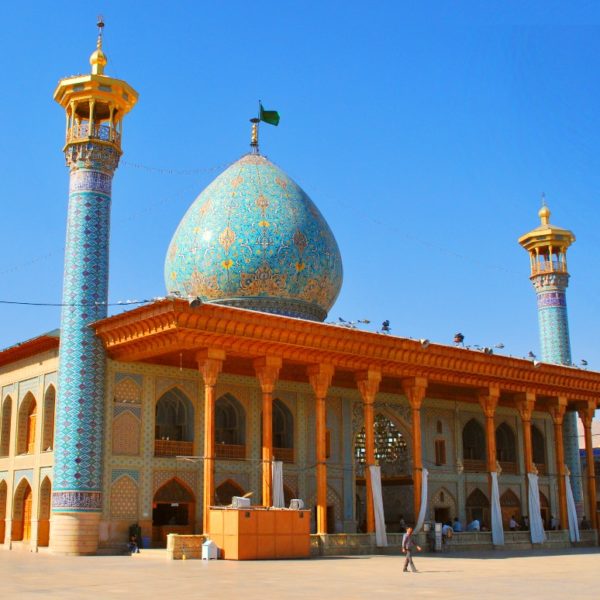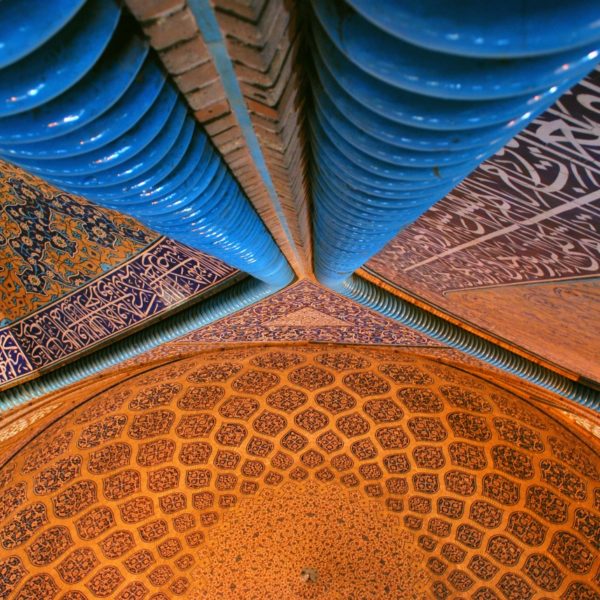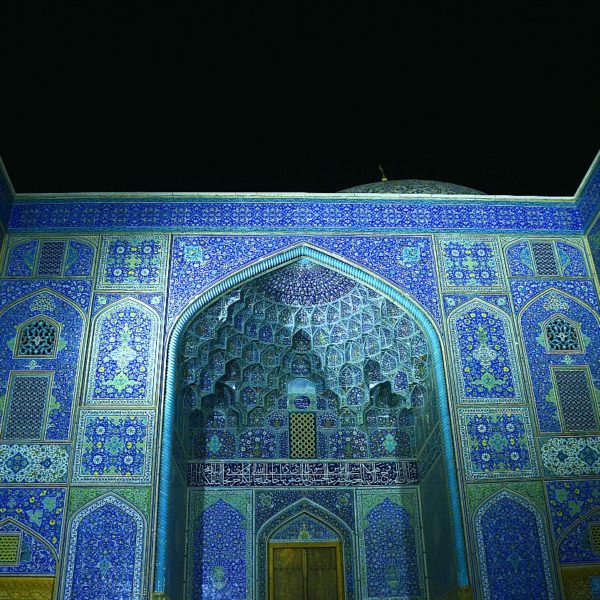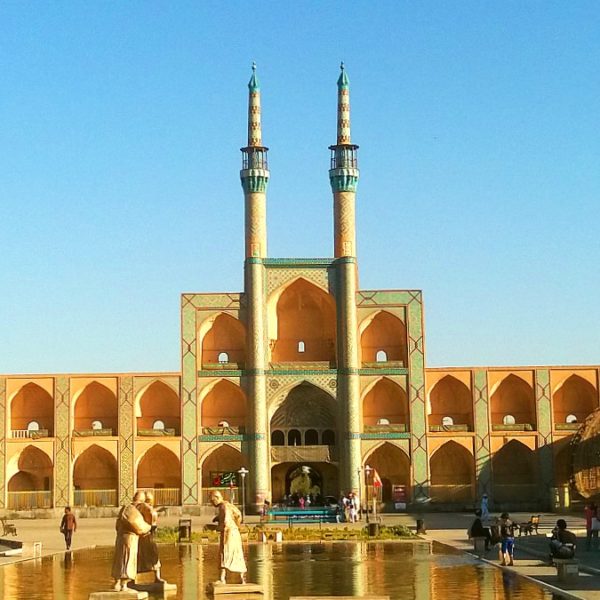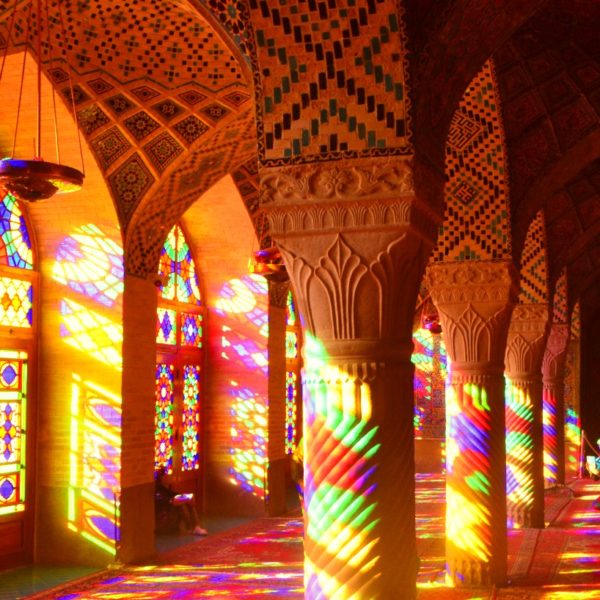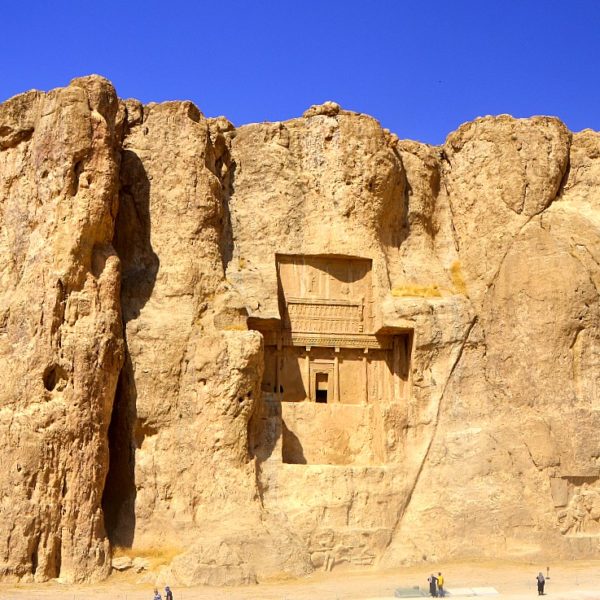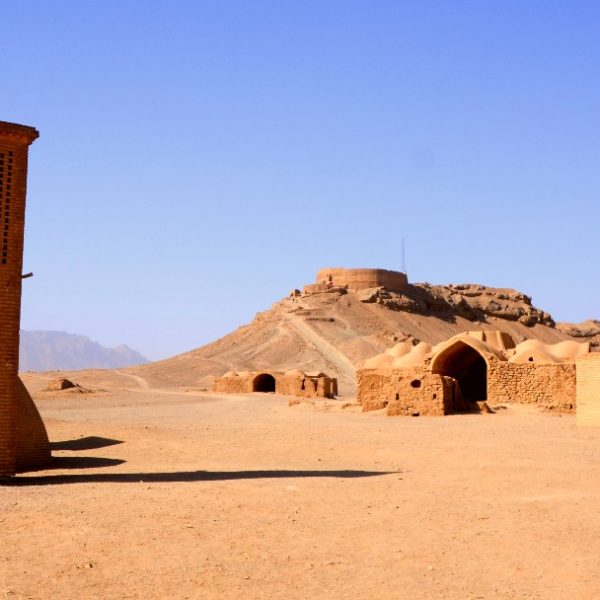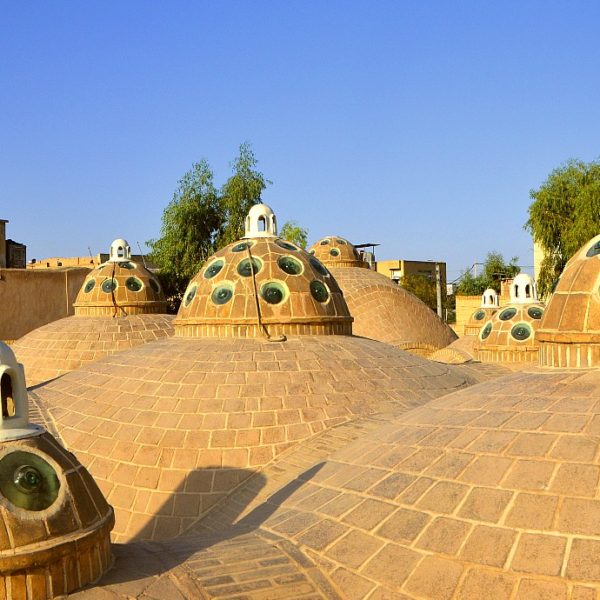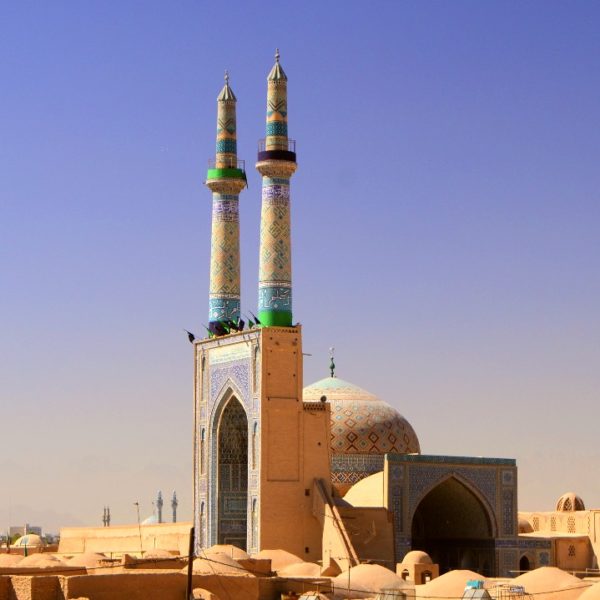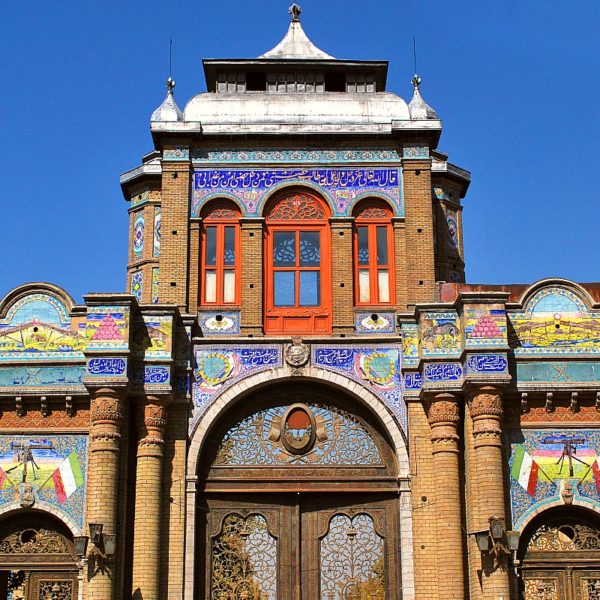Iran – Persian Classic – 12 days
Persia – and currently Iran – is an exceptional country, not only because of its culture and traditions as well as the complicated and long history – even for Middle Eastern standards. It is also a kaleidoscope of religions, cultures, traditions and nations.
The “Persian Classic” tour is not only visiting the most important and most interesting historic sights, for example in Esfahan, Yazd or Shiraz, but also, perhaps most importantly, an encounter with Iranian people. We will try to get to know Iran which – contrary to the common opinion – is a country of many nations and religions. Our tour is not only a feast for the aficionados of history and archaeology but also for the lovers of photography and exquisite cuisine.
itinerary
Flights to Tehran usually take place in the afternoon and evening. After arrival, visa formalities and transfer to the hotel.
After breakfast, we will visit the Iranian capital. We will see one of its highlights, which is the Golestan Palace, an ancient residence of the Persian shahs. Then we will go to the National Museum displaying vast and rich collections of the cultural heritage from the whole country. If it is possible, we will also visit the National Jewellery Treasury in the vault of the National Bank of Iran. In the evening, we will drive to the north of the city where we will walk to the “Roof of Tehran”.
B.
After breakfast, we will leave Tehran. On our way to Qom, we will stop at the Azadi tower, i.e. the Tower of Freedom – the place that commemorates 2500 years of history of Persia and Iran. This is where largest demonstrations took place in 1979, which led to the overthrow of the last shah of Iran. We will arrive in Qom – the religious capital of Iran. Our sightseeing day will include a visit to the Shrine of Fatima Masumeh, sister of the eight imam Ali al-Rida. After lunch, continue our drive to Kashan. Depending on the time of our arrival, we will take a stroll through the old part of the city, where we will visit houses belonging to the Tabatabaei and Borujerdiha merchant families. Dinner and night rest in Kashan.
B.
In the morning, we will visit the traditional Amir Ahmad bath house and a former merchant house called the Abbasian House. Then we will leave Kashan and drive to the Fin Garden – one of the oldest gardens in Iran, dating back to the 15th century. Then we will set off to the amazing village of Abyaneh. It is a very charming and also calm place where we will be able to admire traditional houses covered with red clay. There will be time for a stroll through the maze of narrow streets. Lunch in one of local restaurants. In the afternoon we will go to Isfahan. After arrival and check in, we will go to the Imam Square and to the evening visit of one of the most beautiful cities of the Middle East.
B.D.
From the morning, we will visit one of the most beautiful cities of Iran, trying to see the most important of its numerous attractions. To start with, we will take a walk through the largest municipal square in the world – the Imam Square, Meidan Emam, founded in the 17th century. We will also see the sights around it – the Ali Qapu Palace and the Sheikh Lotfollah Mosque, with unique mosaic ornaments. During our visit of Isfahan, we will also go to the Palace of Forty Columns – Chehel Sotoun. In the afternoon, we will see bridges on the Zayandeh Rud River: the Bridge of Thirty-Three Arches and the Khaju Bridge of the 17th century, which are considered the symbols of Isfahan. There will be an optional possibility of shopping in one of the most splendid markets of Iran.
B.
After breakfast, we will go for another day of visiting the city with a long history of over 5000 years, whose time of glory were the 16th and 17th centuries, under the reign of Safavids. Under the reign of Shahs Abbas I and Abbas II, it was one of the largest cities of the world, inhabited by more than one million people. On this day, we will start our visit from one of the oldest and largest mosques of Isfahan – the Jameh Mosque, after which we will go to the Jewish district and, if possible, we will visit one of seven active synagogues. Subsequently, we will take a stroll around the Armenian district, admiring the churches located there, the most important of which is the Vank Cathedral. After lunch, we will go to Monar Jonban – a mosque of shaking minarets, and we will end the day by shopping at the market and having dinner.
B.
In the morning, we will set off to Yazd. We will go for lunch to the former caravanserai in Meybod. On this day, we will also see the Post Museum and one of the main attractions of the region – the Ice Tower. At the end, we will visit the Nain Tower that is more than 2000 years old. In the evening, we will arrive in Yazd. We will go to the Zurkhaneh House of Power, i.e. a traditional Persian gym whose origins date back to the times when Mithraism was one of more popular religions in the area of contemporary Iran. Dinner and night walk through the maze of the old town streets.
B.
We will start our visit from the oldest part of the city, which is a labyrinth of narrow streets. Moreover, we will see the most famous historical sights of Yazd: the Amir Chaqu Maqu mosque – which is one of the landmarks of Iran – and the Jameh Mosque originating from the 15th century. We will also visit a building of an ancient madrasa, known as the prison of Alexander the Great. During our visit of Yazd, we will learn about the traditional house cooling systems, i.e. wind towers – badgirs. In the afternoon, we will go to an active Zoroastrian temple where we will receive some basic information about one of the oldest religions of the Middle East. Before sunset, we will visit the Zoroastrian burial sites (Dakhmas) – towers of silence. After a short hike, we will reach the peak of a hill with a view to the panorama of Yazd and the surrounding desert and mountains. In the evening, a visit to the Dowlat Abad Garden.
B.
In the morning, we will leave Yazd and set off to Persepolis. En route, we will stop in Abarkuh for a short rest and a visit in one of the most beautiful of the traditional Persian merchant houses – Agazadeh. We will start the visit of the ruins of the first capital of the Persian empire from the Tomb of Cyrus II the Great, one of the progenitors of the Achaemenid dynasty. Subsequently, we will go to Naqsh-e Rostam, an ancient necropolis with Royal Tombs of Achaemenids and rock-carved reliefs made in the era of the Sasanid Empire when the Persian ruler Shapur I led winning wars with the Roman Caesar Valerian. In the evening, arrival in Persepolis, dinner and night rest.
B.
After breakfast, we will set off to visit the ruins of the ancient city of Persepolis. It was the antique capital of Persian rules of the Achaemenid dynasty. It is the location of the Palace of Darius the Great and Palace of Xerxes. Drive to Shiraz, lunch, then a visit to the Eram Garden and to the mausoleum of the most famous Persian poet and philosopher Hafiz, surrounded by a beautiful garden. In the evening, we will go to the exceptional place which is the Shah Cheragh (The King of Light) Mausoleum, one of the most sacred Shia sanctuaries in Iran. Dinner and night rest.
B.
Whole-day tour around Shiraz, which is called “the city of roses and nightingales”. Early in the morning we will visit the Nasir-ol-Molk Mosque with its amazing floor and stained glass windows that create inside the mosque a magnificent colourful spectacle, especially just after sunrise. Subsequently, we will see the Jomeh Atigh mosque, one of the oldest ones in Shiraz, and the Vakil Mosque from the 18th century, with its public baths and market. Then we will have lunch, after which we will visit the Karim Khan Fortress and go for last shopping at one of the oldest traditional markets in Iran – the Vakil Bazaar. Farewell dinner and night rest in Shiraz.
B.
After breakfast, depending on the departure time, transfer to the airport and flight to Tehran. The time left until the departure home from Iran can be used in several ways (any related costs are not included in the tour price).
- A drive to the northern regions of the city to visit the palace-park complex of the last rulers of Iran from the Pahlavi dynasty. We will see the Saad Abad complex. If time allows, we will take the cableway up to more than 4,000 metres above the see level, to one of the mountain peaks overlooking the capital. Then transfer to the airport and flight home from Iran.
- After arrival, there will be time for a shopping trip to the largest market in the Middle East. Lunch and transfer to the airport, flight home from Iran.
In the evening, those of you who will continue the journey to the south-east or north-west of Iran, will have a meeting and dinner with new participants of the next tour.
B.
Practical information
- the length of the tour : 12 days in Islamic Republic of Iran;
- start of the trip: Teheran;
- end of the trip: Teheran;
- the highlights of this expedition Persia – and currently Iran – is an exceptional country, not only because of its culture and traditions as well as the complicated and long history – even for Middle Eastern standards. It is also a kaleidoscope of religions, cultures, traditions and nations. The “Persian Classic” tour is not only visiting the most important and most interesting historic sights, for example in Esfahan, Yazd or Shiraz, but also, perhaps most importantly, an encounter with Iranian people. We will try to get to know Iran which – contrary to the common opinion – is a country of many nations and religions. Our tour is not only a feast for the aficionados of history and archaeology but also for the lovers of photography and exquisite cuisine.No special fitness is required. The travellers should be able to visit historic sites and towns on foot, which may take up to several hours. .Accommodation is planned in hotels corresponding to the 3- and 4-star standard, and sometimes also in traditional houses transformed into cosy hotels. We will also stay in small family bed and breakfasts, especially in small towns and villages that we will visit during our journey. During the tour, we will travel by minibuses and passenger cars. The itinerary was designed to enable best possible viewing of the places that are the tourist attractions of Iran. Bear in mind that the Islamic Republic of Iran is mostly inhabited by Shia Muslims, but we will also meet other religious groups. This means the need to respect cultural differences and adhering to the appropriate dress code.Depending on the political situation, the length of the tour and the order of visited places may change. In a situation of a serious threat to travellers’ safety, the tour may be cancelled. We will keep you updated as to whether the expedition is possible.
- Your passport must be valid for at least 6 months after the planned end of the tour.
- Before departure, you must obtain a tourist visa. The visa can be obtained online https://e_visa.mfa.ir/en/ or in the diplomatic missions of the Islamic Republic of Iran.
- You should take with you for the trip a photocopy of your passport (the photo page) and an additional ID document.
- Before departure, we recommend a consultation with a family physician and a tropical medicine specialist.
- Malaria prophylaxis is recommended but an infection is low because of the climate, the trip dates and the itinerary of the planned tour.
- Vaccination against tetanus, diphtheria, viral hepatitis A and B and typhus is recommended.
- There is a risk of tuberculosis.
- We recommend visiting https://travelhealthpro.org.uk/countries.
- During our expedition, we will drink only bottled water. You should avoid ice in your beverages and eating raw or undercooked foods.
- At the visited places, only private healthcare exists (a visit cost is approximately USD 50).
- Because of difficult travelling and accommodation conditions and particularities of the country, good general health and physical fitness are necessary.
- Please take with you the first-aid kit and the adequate supply of the medicines that you take regularly (if prescribed by a doctor); below are some of the first-aid kit essentials:
- high sun protection cream (recommended SPF 50)
- disinfectants, wound dressing materials
- analgesics and antipyretics
- anti-diarrhoeals, electrolytes and vitamins
- insect repellents – south-eastern Iran
The Islamic Republic of Iran is a relatively stable and well organised country.
For the time being, it is possible and relatively safe to travel to Iran along the itinerary we propose. The risk of an armed conflict or a terrorist attack is low. We design our itineraries so as to avoid places that are potentially most dangerous (border region with Afghanistan and Pakistan).
There may be some risk of pickpocketing or electronic equipment thefts, especially at places packed with tourists or crowded (market places).
You should avoid unpopulated places, especially after dark. You should use common sense, not flaunt expensive jewellery, valuable watches or photo cameras, and carry money and passport concealed under your clothing. The places we will visit are rather safe but nevertheless you should remain on guard.
While travelling to the north-western regions of Iran, you should remain vigilant while hiking to vantage points and mountain fortresses.
Owing to the good relations we have with local contractors, we keep following the news to be aware of any potential threats and safety risks. We also recommend you to read the latest news on the Foreign & Commonwealth Office website: https://www.gov.uk/foreign-travel-advice.
During the tour, please take seriously the instructions of our contractors, guides and tour leader.
It is very important to respect local customs and abide by local laws and regulations. You will receive the necessary information on an on-going-basis from your local guides and the tour leader.
It is prohibited to bring into the Islamic Republic of Iran alcohol and illicit drugs, pornography, pork and meat products containing pork as well as goods produced in Israel.
There is no legal possibility of drinking alcoholic beverages in the country.
It is strictly prohibited to take photos and make video recordings at military and police installations and at airports. You are also not allowed to take photos where people in military/police uniforms are present!!!
Photographing people is possible only when they expressly agree to it. Taking pictures when the subjects have not allowed it often ends up with escalating aggressive behaviours.
The official currency in the Islamic Republic of Iran is rial. Currency exchange is possible in towns and cities – at the airport, in banks, in authorised foreign exchange points and in hotels. In small towns and rural villages currency exchange is practically impossible. The best foreign exchange rate is for euros and US dollars. UK pounds are not generally exchangeable.
Because of the international economic sanctions, it is impossible to use payment card systems that are in general use all over the world.
It is possible to open a bank account with a payment card that is generally accepted throughout the country. Because of inflation and large face value of banknotes, it is a very safe and convenient solution. If you are interested, please contact the office when booking the tours to Iran.
For current foreign exchange rates see www.xe.com or install xe.com on your phone.
The language most commonly used in the Islamic Republic of Iran is the Persian language – Farsi. Many other languages are also used within the Iran area, for example Arabian, Azeri and numerous local languages. For self-guided tours, you must speak English or hire a local guide with a command of English.
The Islamic Republic of Iran is a theocratic country that is officially ruled by Islamic laws, with ethnic and religious diversity. It is very important to read the information about clothing. Women must wear headscarves at all public places, which includes hotels and restaurants. Headscarves must be put on the head before landing in Iran. It is prohibited to wear garments with short sleeves above the elbow or with low necklines, woman’s suits, short skirts and short dresses. Loose and long skirts or trousers and tunics are necessary. The tunic or manteau should come at least to mid-thigh. It is allowable to wear sandals and open shoes, both by women and men. When visiting some mosques and other places of worship, women may be asked to put on a chador that can be borrowed free-of-charge at the entrance to the building. You should bear in mind that there are considerable differences between the conservative province and very liberal large cities, in particular Tehran and Shiraz. Men are not allowed to wear shorts and T-shirts. During official encounters, women do not give their hand to a man, and men do not give their hand to a woman. This custom is still observed in the province but is increasingly abandoned in large towns. Discussions about political subjects should be avoided. Iranians are curious about the world and tourists and are ready to take up such conversations.
It is very important to respect local customs and abide by local laws. You will receive the relevant information from your local guide or the tour leader.
The proposed dates of the individual tours to Iran are proposed in periods of the best possible weather conditions at the sites included in the itineraries.
Classical Iran. The best time for expeditions to the middle part of Iran are periods from April to the end of June and from September to November. Temperatures range from +17°C to +30°C during the day and from +5°C to +17°C at night. Occasional rainfalls are possible. There may be some difficulties related to high dustiness of the air and strong sunlight.
For detailed information about the weather, see https://www.meteoblue.com/en.
Mobile network coverage is available in most towns and villages. It is possible to purchase a local SIM-card with an Internet package for a fair price. Wi-Fi is available at most hotels in cities and in some restaurants and cafeterias. Before the trip, please enquire with your mobile network operator whether they have a contract signed with operators in Iran and what the prices of call and SMS roaming are. To avoid a nasty surprise, we recommend disabling mobile data usage.
Power sockets of type C, E and F. Voltage 230 V, frequency 50 Hz.
Wi-Fi is available at most hotels and restaurants.
Additionally, we recommend taking a capacious power bank.
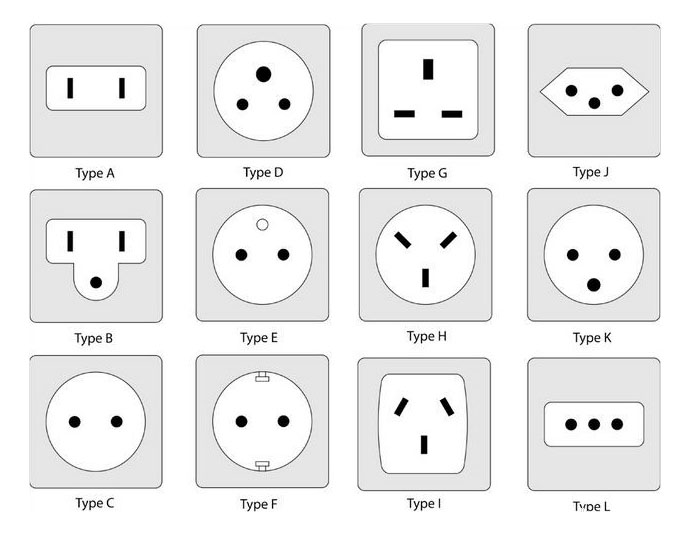
For climatic and cultural reasons, loose garments will be most appropriate: long trousers, long skirts, long-sleeved shirts, which can be easily washed and will quickly dry. The most comfortable footwear for the tour will be lightweight boots. Palladium brand boots are recommended. Wearing open sandals is possible. The following are worth taking:
- sachet for documents and money
- wet wipes for body cleaning and antibacterial gels
- hiking boots, they do not have to reach above the ankle (north-western Iran)
- sleeping bag – it may be useful for the trip to the north-western part of Iran
- raincoat, especially for the trip to the north-western part of Iran
- polar fleece jacket or warmer blouse which may prove useful at evening and night times
- head cover and sunglasses – mandatory, the sun is no joke!
- comfortable summer clothes, useful during practically the whole trip
- light T-shirts/shirts
- swimwear
- useful odds and ends: torch, Swiss Army knife, sewing kit (usually is not needed but is not heavy and does not take much place), chargers, mug (for special occasions); inflatable neck pillow, useful on the plane and during car rides; small wallet for the local currency; books to pass the time on flights and car rides
Price
Price: £ 2690 p/p
Domestic flight Shiraz – Teheran
During the tour, we will we will travel by passenger cars or minibuses, and also, if necessary, by off-road vehicles. Speed depends on the road surface conditions, terrain characteristics and number and length of stops.
We are not able to guarantee a uniform accommodation standard at each of the planned sites during the stay in Iran. Our priorities are your comfort, safety and appropriate location. We always place emphasis on the support of local community when selecting the sites for our accommodation. In general, rooms will be assigned on the assumption of two people sharing a twin room (rooms with individual bathrooms). The surcharges for single rooms are quoted in the “Price” section.
Two overnight stays in a hotel approximately corresponding to the 3-star and 4-star standard are planned during the tour.
In some towns, we will stay for the night in traditional Persian houses transformed into small hotels.
In small towns and rural villages our accommodation will be in family bed and breakfasts or small hostels.
Meals are included in the tour price, as specified in the itinerary. B – breakfast, L – lunch, D – dinner. Breakfasts will be provided at the hotel. We will go for lunches and dinners to local restaurants. The cuisine of Iran is very varied, similarly as the culture and history of this part of the Middle East. Depending on the itinerary, we may be able to sample the local cuisine of Baluchistan, the region of the Strait of Hormuz, or the Caspian regions of the Gilan Province, where we may taste fish and seafood delicacies.
For information about the local costs of living see https://www.numbeo.com/cost-of-living/.
Local and special guides in national parks
All entrance fees and permits to visit national parks and reserves in the itinerary
Trip preparation, the invitation necessary to obtain a visa
Costs of the main flight to and from Teheran
Costs of flight tickets are not covered by the tour price. BTP Adventure does not directly arrange and buy tickets for international flights. However, we may suggest the best connections and airlines. For this purpose, contact us by e-mail or call us.
Visa for the Islamic Republic of Iran. Online https://e_visa.mfa.ir/en/
Insurance is not covered by the tour price. Having valid insurance is a condition for taking part in the trip. We recommend taking out insurance that will be appropriate for the planned itinerary and for your individual state of health and needs. Please send us the proof of your insurance contract.
You can purchase insurance on your own on the website of Axa or any other insurance company: https://www.axa.co.uk/travel-insurance/.
BTP Adventure may help you obtain adequate insurance cover. If you want our help, please contact us.
The price does not includes the cost of tips and porters’ fees.
Meals other than those listed in the final itinerary.
Personal expenses and souvenirs.
Surcharge for a single room: 300 £
Visit of Tehran on day 12
supplementary payment for the additional accommodation In the case of arrival or departure on a different date,
Final notes
We will keep updating the detailed information on the safety and final itinerary of the tour. Before you decide to submit the booking form, please learn about the current political and sanitary situation in the Islamic Republic of Iran , especially at the places on the itinerary of our tour.
The planned expedition is an exclusive proposal prepared on the basis of our experience and knowledge of the local peculiarities and major sightseeing attractions of the Islamic Republic of Iran
We are committed to ensure the best possible and safe and, as far as feasible, comfortable travelling through this rarely visited and extremely interesting country which is the Islamic Republic of Iran
Depending on the political situation, the length of the tour and the order of visited places may change. In a situation of a serious threat to travellers’ safety, the tour may be cancelled. We will keep you updated as to whether the expedition is possible.
Persian Classic – 12 days trip to Islamic Republic of Iran on you can extend the trip to the northwest or southeast of Iran.
Trip to Iran can be combined with trips to Iraq, Pakistan and Kurdistan. If you are interested, please contact the office.
With any questions please contact BTP ADVENTURE
2690 £ Per Person
Persian Classic – 12 days trip to Islamic Republic of Iran on you can extend the trip to the northwest or southeast of Iran.
Trip to Iran can be combined with trips to Iraq, Pakistan and Kurdistan. If you are interested, please contact the office.

